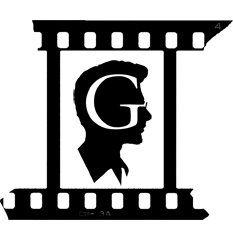For the storybook feel, I've been looking at Lotte Reiniger, who did many adaptations of fairytales in her signature silhouette style. Because her work is silhouette, it means all movements, and environments, need to be laid out laterally, across the screen. This leads to very figurative landscapes, delicate and intricate.
I really like this paper-cut feel and am looking to incorporate some of it's fragility into my work.
Because I am going for a dark feel, I am also looking at one of my favorite writer/illustrators, Edward Gorey. His work falls into the category of literary nonsense, and the same can be said of many nursery rhymes. His characteristic drawings are usually quite bleak and minimalist: empty hallways, half-open doors, grey landscapes, dead gardens, etc. The compositions of his drawings are very specific and geometric, with the placement of characters within their environment (or deliberate omission of content within the frame) telling as much a story as the actual content.
Because of the Edwardian influences, I'd like to explore the use of a zoetrope as the bookends for the piece. Though most of it will be animated in the computer, I think it would be fun to introduce the nursery rhyme as a strip of animation played back in a zoetrope. The idea is that the scroll is one in a large cabinet of dark nursery rhymes, hinting at the possibility of a larger series.
If I am to going to go with the zoetrope idea, my main concerns in that area will be to
a) find/build a zoetrope.
b) make the film strips
c) storyboard and film that sequence.
Based on these influences, I am thinking of employing a 2.35:1 cinematic aspect ratio, which allows for almost triptych-like compositions. The sort of two-dimensional cinema feel that I am going for is characteristic of the films of Wes Anderson, who primarily uses constrained lateral camera movements such as tracking and pedestaling.






I am looking for humor in restraint. Little movement or action, minimal gestures used to convey over-the-top emotions.
I have re-written the last two lines of the nursery rhyme as a "twist ending" if you will.
Jack and Jill
Went up the hill
To fetch a pail of water.
Jack fell down,
And he did drown,
And Jill had peace thereafter.
The idea is that Jill is constantly plagued by her younger brother Jack, and decides to push him down the well in retribution. The narrative is simple, with titles alternating with corresponding sequences, like in silent film.
An interesting article on awkwardness in film at Splice Today.
The Film in question is this:
Watch Death to the Tinman in Entertainment | View More Free Videos Online at Veoh.com




No comments:
Post a Comment